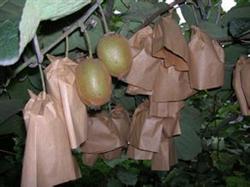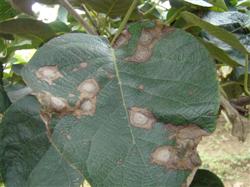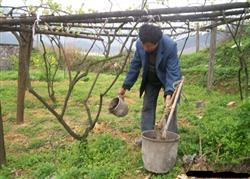Technical experience in cultivation and Management of kiwifruit-- planting techniques

The main contents are as follows: 1. the primary and secondary are distinct, and the selected varieties are mainly late-maturing varieties Hayward and Qinmei, with early-maturing varieties Hongyang, medium-maturing varieties Xu Xiang, Jinxiang and Qiuxiang. 2, standardized tree shape, single branch on the shelf: select "T" scaffolding, flat stubble in the same year after planting, promote upright single main vine, pick out the heart at 20cm under the shelf, leave two strong branches fixed on the central wire after intersecting under the shelf, cultivate into two backbone branches, cultivate a fruit mother branch every 3050cm, and let it droop beyond the shelf surface. High-end replacement and multi-main vine mature trees should also be transformed step by step according to the "T" frame. 3. Increase the application of organic fertilizer and reasonable topdressing: after composting, the farm manure is mixed with calcium superphosphate 50 kg / mu and ammonium carbonate 40 kg / mu as base fertilizer, 2000 kg / mu in the young garden and more than 4000 kg / mu in the adult garden. Planting hairy vetch and building biogas digester in orchard, biogas residue combined with irrigation was applied into orchard. Reasonable topdressing: kiwifruit topdressing 3murine 4 times in the whole year. Before sprouting, nitrogen and phosphorus were given priority to, urea 10m / mu 15kg, calcium superphosphate 20m / m 30kg. During the fruit expansion period, early-maturing varieties in late June and late-maturing varieties in early July, potassium sulfate compound fertilizer (15% ternary compound fertilizer each) was selected and 35 kg per mu was applied. During the growing season, combined with spraying calcium, iron, zinc and other trace elements foliar fertilizer for 3-4 times, the expansion agent is firmly prohibited. 4. Quantitative hanging fruit to ensure high quality: artificial pollination, picking the male flowers when they are budding, taking their stamens, placing them under the constant temperature and drying condition of 25 ℃, and collecting pollen after 24 hours. After the female flowers bloom, the best pollination time is 9-11:00 and 15-17:00 in the afternoon. Methods such as flower spot, flower spray and spray can be used. 50 grams of pollen is added to 10 kg 0.5% sugar solution during spraying to finish within 12 hours; flower thinning and fruit thinning: 5 fruit per branch, completed in three times, up to 350 fruit per plant, leaf-fruit ratio is 8-color 91; fruit bagging: bagging in time after spraying fungicide 10-15 days after flowering, and picking bags 15-20 days before maturity. Kiwifruit cultivation and management techniques 6, biological control, pest control: 7, 1 disease control: from March to April, the whole garden was sprayed with 3mur5 degrees of stone sulfur mixture or 600 times liquid or 600 times liquid of Longke bacteria respectively to control canker disease. 100-150ppm agricultural streptomycin or 5% bacteriorubicin was used to control bacterial flower rot. Spray with 1000 times of carbendazim to control black spot. 8. 2 pest control: ① tea wing bug, hemp skin bug control: remove or erase the egg block on the back of the leaf. At the end of May, the repellent net was hung in the orchard, hanging 40 murals per mu or self-made smoke agent, and fumigated. ② spot wax cicada, big green leafhopper control: early spring wipes out the egg mass on the shady side of the branch. The larvae can be sprayed with 2000 times of green kungfu liquid during the period of mass occurrence. ③ mulberry shield scale control: the adults on the branches can be wiped off with rags or bamboo brushes in winter or early spring, and the nymph eggs can be sprayed with 0.5% bitter smoke water 800 times liquid or 4.5% liquids 2500 times solution. ④ small salary beetle and white star flower beetle control: spray with 2.5% green kungfu 2500 times liquid. ⑤ Red Spider: spray with avermectin, methotrexate or Uranus 3000 times. After defoliation, the branches with diseases and pests such as mulberry shield scale, cicada eggs and canker were removed by winter shearing, burned centrally, and sprayed with 3Mel 5-degree stone sulfur mixture to clean the orchard thoroughly.
- Prev

Identification and control of kiwifruit branch blight
Kiwifruit branch blight, also known as dehydrated branch blight, is a physiological disease caused by climatic factors, which is caused by no man-made fertilizer or drug damage, as well as pathological root rot, branch rot, canker and so on. the phenomenon of sudden wilting and death of fruiting branches or vegetative branches. First, symptoms of the disease.
- Next

How to apply fertilizer to protect the benefit of kiwifruit
Kiwifruit grows fast, bears early fruit and consumes a lot of nutrients, so reasonable fertilization is needed to meet the requirements every year. (1) Base fertilizer: generally applied after harvest and before defoliation. Mainly organic fertilizer, properly combined with phosphorus, potash fertilizer and available nitrogen fertilizer or human feces and urine, etc. At the same time, cooperate with spraying new high fat film to improve the utilization of effective components of fertilizer.
Related
- Moge, come on! The staff of the peasant association in the producing area of cantaloupe were frightened when the crowd gathered.
- Causes and Solutions of low Fruit setting rate of Apple
- Symptoms and control measures of passion fruit virus disease
- Fruit growing lesson: how do apple orchards keep high yields?
- Can you build orchards in the mountains? What are the pros and cons?
- How to manage the coloring period of Crisson grape?
- This paper introduces the processing technology of two kinds of fig products.
- How much is a month for retired teachers in rural areas by 2020?
- How can strawberry planting increase sugar content? We should pay attention to management in many aspects.
- What are the cultivation techniques on how to improve the yield of golden fruit?

